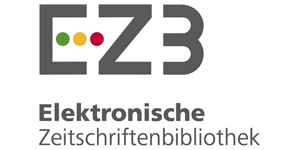Submissions
Submission Preparation Checklist
As part of the submission process, authors are required to check off their submission's compliance with all of the following items, and submissions may be returned to authors that do not adhere to these guidelines.- The submission can be made by up to three authors, with at least one of them being a Doctor or a Ph.D. candidate.
- The contribution must be original and unpublished, and it should not be under consideration for publication by another journal. Otherwise, justification must be provided in the "Comments to the Editor."
-
The text follows the style standards and meets the requirements described in Author Guidelines.
- The files should be submitted in Microsoft Word, OpenOffice, or RTF format and should not exceed 2MB.
- The authorship identification of the submission (name, affiliated institution, positions held, email, academic qualifications, etc.) must be removed from the article and file properties, ensuring confidentiality for the double-blind peer review of the journal, as per the instructions available at Evaluation Process.
- The abstract and introduction must include the justification of the text, its objectives, and the methods and materials employed. Additionally, the obtained results should be an integral part of the introduction.
- Authors will have a period of 15 days to make corrections, when necessary, based on changes suggested by the Editorial Board or reviewers.
-
Tables, graphs, charts, and figures, in general, should be inserted in the body of the text and not at the end of the document. They should adhere to the IBGE Table Presentation Standards. The original files, in editable format, should be submitted as attachments with the submission. -
Upon submitting manuscripts to the Revista de Estudos Jurídicos da UNESP, the authors and coauthors declare that:
a) They submit the article freely and voluntarily, granting authorization for publication in the case of approval;
b) They consent to gratuitously transfer the copyright to the work to the Revista de Estudos Jurídicos da UNESP, authorizing its publication in future editions of the journal;
c) They are free and unencumbered to make the transfer, with no encumbrances, charges, or contracts preventing them from doing so;
d) They are the author(s) of the texts and content comprising the article and/or have the authorization of the authors and/or coauthors to submit and transfer rights;
e) They assume full responsibility for the originality of the work in accordance with Law No. 9,610, of February 19, 1998 (Copyright Law);
f) They grant the Revista de Estudos Jurídicos da UNESP complete prerogatives for choosing the editor, means of publication, reproduction, disclosure, circulation, format, and everything necessary for the effective publicity of the work after approval;
g) They did not use research involving human subjects or, if conducted, it followed the determination of the National Health Council Resolution (CNS 196/96), with approval from the Research Ethics Committee of the author(s)' institution or where it was conducted (attached to this submission). The authors/responsible parties have the Free and Informed Consent – FIC available for consultation and verification;
h) They provide accurate and truthful information, did not create false identities, and did not use subterfuge to deceive individuals, institutions, or obtain benefits of any kind;
i) They are responsible for any and all information, subject to administrative and legal implications arising from inaccurate or false statements that may cause harm to the Journal or third parties (Articles 298 and 299 of the Brazilian Penal Code);
j) They do not use the journal for illicit, prohibited, or illegal purposes and do not violate the privacy or rights of third parties, including copyright or intellectual property rights. - The authors' information, such as full name, institution, positions held, email, academic qualifications, Lattes, ORCID, including the curriculum that should appear in a footnote on the initial page of the article in case of eventual publication, must be inserted on the website during the submission process. Authors are responsible for keeping this information updated. All metadata should be provided in the system, noting that in the case of funded research, the information should be entered in the "Comments to the Editor."
- In the body of the text, citations should follow the author-date citation system (according to ABNT NBR10520:2023 or the standard that replaces it). The use of footnotes is exclusively for substantive observations regarding the content of the text. References should be prepared in accordance with the norms of the Brazilian Association of Technical Standards (NBR6023:2018 or the standard that replaces it) and presented at the end of the text, separated from each other by a space and aligned to the left.
Copyright Notice
Upon submitting papers to the Legal Studies Journal of UNESP, the author declares:
a) their consent to assign copyright to the work, aiming that, if approved, its publication be carried out in future editions of the Legal Studies Journal of UNESP;
b) being free and unencumbered to make the assignment, with no existing burdens, encumbrances, or contracts preventing them from doing so.
c) agreeing to the rights assignment they make and doing so gratuitously;
d) their authorship of the texts in question, as well as other content comprising their article, and/or having authorization from the authors and/or co-authors to make the respective submission and rights assignment;
e) assuming full responsibility for the originality of the work, in accordance with the terms presented and Law n. 9,610 of February 19, 1998 (Copyright Law);
f) offering the Legal Studies Journal of UNESP full prerogatives concerning the choice of editor, means of publication, reproduction, disclosure, circulation, format, and everything necessary for the effective publicity of the work after its approval.
Privacy Statement
Names and addresses provided in this journal will be used exclusively for the services provided by this publication and will not be made available for other purposes or to third parties.
























